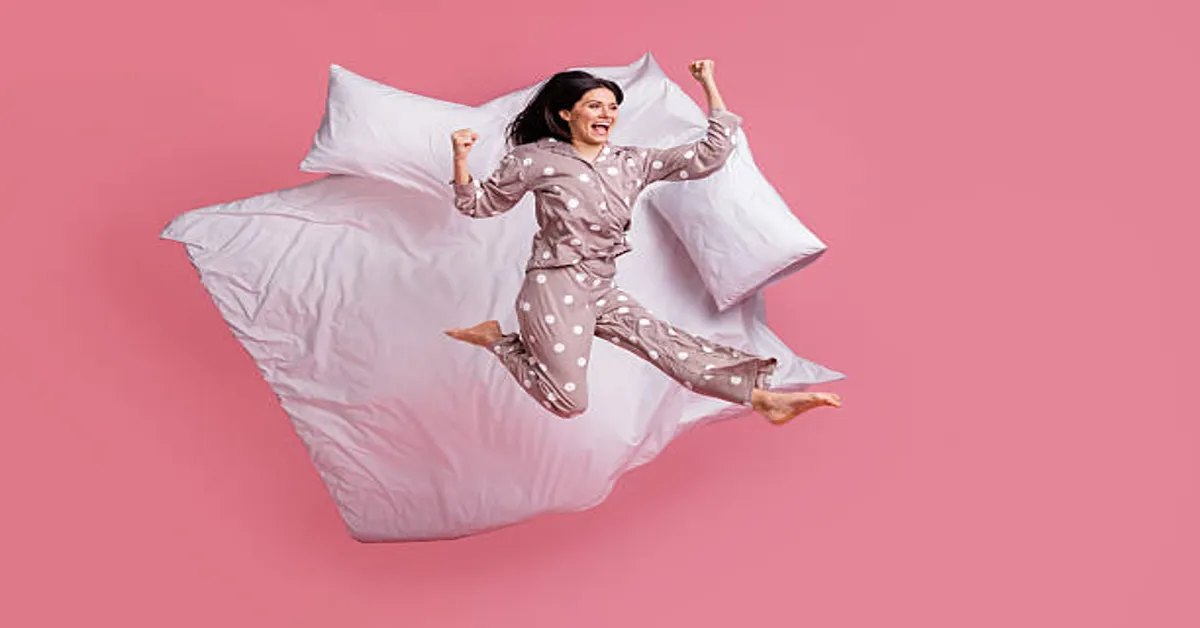Human sexuality is diverse and often complex. People explore their bodies in different ways, especially during childhood, adolescence, and even adulthood. One form of self-stimulation that appears across these stages is pillow humping. Though the phrase may sound unusual or even taboo, it simply refers to using a pillow or similar object as a means of sexual exploration or self-soothing.
This behavior is often misunderstood, surrounded by myths, embarrassment, or secrecy. Many individuals first encounter pillow humping in their childhood or teenage years without fully understanding what it means. Others may continue it into adulthood as part of self-pleasure. In all cases, the topic deserves a clear, healthy, and stigma-free discussion.
In this article, we will explore pillow humping in detail, including its psychological background, causes, health perspectives, potential risks, and cultural views. We will also provide guidance for parents, discuss healthy sexual practices, and debunk common misconceptions. By the end, you’ll have a full understanding of this behavior and how it fits into the broader picture of human sexual development.
What Is Pillow Humping?
Pillow humping refers to the act of pressing or rubbing the body—most often the pelvic area—against a pillow or cushion. It is typically a form of masturbatory behavior, though in children it may also be linked to comfort-seeking rather than overtly sexual intent.
While commonly associated with puberty and early sexual development, pillow humping is not limited to young people. Adults may also engage in it as a form of self-stimulation.
Key Points:
- Non-penetrative behavior: Unlike penetrative acts, pillow humping involves external stimulation.
- Common and natural: Many people experience it at some stage of life.
- Not always sexual: In young children, it may be soothing or exploratory rather than erotic.
- Private activity: Most people practice it in private, which sometimes leads to unnecessary shame.
Developmental and Psychological Perspectives
To understand pillow humping, it’s important to consider the different age stages at which it may occur and the psychological processes involved.
Childhood Exploration
- Children sometimes rub against pillows, stuffed animals, or blankets.
- This may serve as self-soothing, much like thumb sucking or rocking.
- At this stage, children usually have no concept of sexuality.
- For parents, the behavior should not be immediately alarming unless it becomes excessive or disruptive.
Adolescence
- During puberty, hormonal changes heighten sexual curiosity and physical sensitivity.
- Pillow humping becomes a way to explore arousal privately, especially before individuals learn about or engage in other forms of masturbation.
- The behavior often decreases once people discover alternative sexual outlets.
Adulthood
- Adults may continue pillow humping for comfort, nostalgia, or preference.
- Some find it an effective form of masturbation without needing their hands or other tools.
- It can also be integrated into partnered intimacy if consensual.
Causes of Pillow Humping
Why do people engage in pillow humping? There are multiple overlapping explanations.
1. Curiosity and Exploration
Human beings are naturally curious about their bodies. As children and teenagers grow, they discover what feels pleasurable. A pillow is a safe, accessible, and private tool for experimentation.
2. Comfort and Self-Soothing
For children, rubbing against soft objects can mimic comfort behaviors. Even in adults, the act may provide a sense of stress relief or relaxation.
3. Sexual Gratification
In teenagers and adults, pillow humping can directly stimulate the genitals, leading to arousal and orgasm. It becomes a form of masturbation.
4. Habit Formation
If someone begins pillow humping at a young age and finds it pleasurable, they may continue into adulthood out of habit.
5. Accessibility
Unlike sex toys or partners, a pillow is always present, discreet, and requires no additional resources.
Myths and Misconceptions
Pillow humping is often misunderstood. Let’s clarify some common myths:
| Myth | Reality |
|---|---|
| Only children hump pillows. | Many adults also use this method for pleasure or comfort. |
| It is abnormal or harmful. | It is a common, generally harmless behavior. |
| It means someone is sexually deviant. | It is simply a form of self-stimulation, not a sign of pathology. |
| It damages sexual health. | No scientific evidence links pillow humping to long-term harm. |
| Only females engage in it. | People of all genders may do it. |
Health Perspectives
From a medical and psychological standpoint, pillow humping is generally benign and normal. Still, certain considerations apply.
Physical Health
- Safety: As long as the pillow is clean and free from sharp objects, there are no direct health risks.
- Hygiene: Repeated use without washing the pillow may cause skin irritation or infection.
- Overuse: Excessive friction may cause temporary soreness.
Mental Health
- Shame: Individuals may feel embarrassed or guilty, especially if scolded during childhood.
- Secrecy: Keeping it hidden can sometimes cause anxiety.
- Acceptance: Recognizing it as normal helps reduce unnecessary stress.
Potential Risks
While pillow humping itself is not harmful, certain risks can emerge under specific conditions:
- Excessive Frequency – If the behavior becomes compulsive, interfering with daily life, it may indicate underlying stress or sexual compulsivity.
- Public Behavior – Children who hump pillows in public may face social embarrassment, requiring gentle parental guidance.
- Injury – Using hard or rough objects instead of soft pillows can cause irritation.
- Psychological Distress – Harsh judgment from parents or peers can create long-term shame.
Pillow Humping and Sexual Development
Pillow humping can be seen as part of the broader process of sexual development.
- In children: exploratory and soothing.
- In adolescents: discovery of arousal and pleasure.
- In adults: an alternative method of masturbation.
It is neither abnormal nor indicative of problems unless associated with distress, coercion, or compulsion.
Guidance for Parents
Parents often feel shocked or concerned if they notice their child humping a pillow. Here’s how to respond:
Do:
- Stay calm and avoid shaming language.
- Understand that it may be soothing rather than sexual.
- Teach boundaries: explain that certain behaviors are private.
- Provide safe outlets for curiosity, such as age-appropriate sexual education.
Don’t:
- Punish or scold harshly.
- Label the child as “bad” or “dirty.”
- Ignore excessive or distress-linked behavior (seek guidance if needed).
Healthy Sexuality and Alternatives
As individuals mature, they may choose to continue or move beyond pillow humping. Exploring a healthy sexual life involves:
- Self-acceptance: Recognizing masturbation as natural.
- Hygiene: Keeping personal objects clean.
- Exploring variety: If desired, learning other safe methods of sexual expression.
- Communication: In relationships, discussing preferences openly and respectfully.
Cultural and Social Views
Different cultures perceive self-stimulation in varied ways.
- Western societies: Generally more open about masturbation, though stigma still exists.
- Conservative cultures: May view all forms of masturbation negatively.
- Modern psychology: Considers pillow humping a normal form of sexual exploration.
When to Seek Professional Help
Pillow humping is usually harmless, but professional consultation may help if:
- A child engages in it excessively, disrupting social functioning.
- The behavior becomes compulsive in adults, interfering with daily responsibilities.
- Feelings of guilt, shame, or anxiety become overwhelming.
- Physical injury or pain occurs.
Conclusion
Pillow humping is a common, natural, and largely harmless behavior observed across all age groups. From childhood comfort-seeking to adult sexual exploration, it represents one of many ways humans interact with their bodies.
Understanding pillow humping through the lens of psychology, health, and human development removes unnecessary stigma. With proper guidance, acceptance, and education, it can be addressed in a healthy and non-judgmental way.
ALSO READ: Prince Rice: A Complete Guide to Nutrition, Varieties, Benefits, and Uses
Frequently Asked Questions (FAQs)
1. Is pillow humping normal?
Yes, it is a common behavior across different ages and usually a normal form of self-stimulation or comfort.
2. Can pillow humping be harmful?
Not inherently. Risks only arise with excessive frequency, poor hygiene, or harsh self-criticism.
3. Do only children engage in pillow humping?
No. People of all ages and genders may engage in it, sometimes as part of their adult sexual life.
4. Should parents worry if they see their child humping a pillow?
Not necessarily. Gentle guidance about privacy is usually enough unless the behavior is excessive or linked to distress.
5. Does pillow humping mean someone is abnormal?
No. It is a natural behavior and does not indicate sexual deviance or dysfunction.









